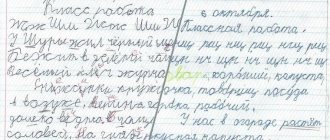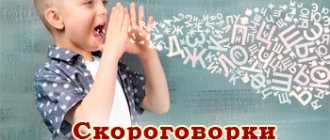Development and education of children from 2 to 11 years old in a playful way
Start practicing right now
Start practicing
Schulte tables are a very common method for diagnosing attention, its stability, volume and distribution between objects. These tables are also used to train peripheral vision. Thanks to an increase in the field of view and the ability to distribute attention, children master the skill of speed reading.
What are Schulte tables?
This is a square table in which the numbers are randomly arranged. The Schulte table can have a different number of rows and columns: for example, 3x3, 4x4, 5x5, 6x6, etc. The larger it is, the higher the level of difficulty.
Initially, the tables were 5x5 in size and had black and white numbers on a white background. However, modern specialists use different levels of complexity of tables and tasks with them.
Courses for developing speed reading and brain training
Would you like to quickly read books, articles, newsletters, etc. that interest you? If your answer is “yes,” then our course will help you develop speed reading and synchronize both hemispheres of the brain.
With synchronized, joint work of both hemispheres, the brain begins to work many times faster, which opens up much more possibilities. Attention , concentration , speed of perception are enhanced many times over! Using the speed reading techniques from our course you will be able to:
- Learn to read quickly
- Improve attention and concentration, as they are important when reading quickly
- It's easy to read one book a day
- Work faster and more carefully
Sign up for a courseFree lesson
Secrets of brain fitness, training memory, attention, thinking, counting
If you want to speed up your brain, improve its functioning, improve your memory, attention, concentration, develop more creativity, perform exciting exercises, train in a playful way and solve interesting problems, then sign up. 30 days of powerful brain fitness are guaranteed.
Sign up for a courseRead more
Super memory in 30 days
As soon as you sign up for this course, you will begin a powerful 30-day training in the development of super-memory and brain pumping.
Within 30 days after subscribing, you will receive interesting exercises and educational games in your email that you can apply in your life.
We will learn to remember everything that may be needed in work or personal life: learn to remember texts, sequences of words, numbers, images, events that happened during the day, week, month, and even road maps.
Sign up for a courseRead more
How to improve memory and develop attention
Free practical lesson from advance.
Sign up for freeRead more
We speed up mental arithmetic, NOT mental arithmetic
Secret and popular techniques and life hacks, suitable even for a child. From the course you will not only learn dozens of techniques for simplified and quick subtraction, addition, multiplication, division, and calculating percentages, but you will also practice them in special tasks and educational games! Mental arithmetic also requires a lot of attention and concentration, which are actively trained when solving interesting problems.
Sign up for a courseRead more
Money and the Millionaire Mindset
Why are there problems with money? In this course we will answer this question in detail, look deep into the problem, and consider our relationship with money from psychological, economic and emotional points of view. From the course you will learn what you need to do to solve all your financial problems, start saving money and invest it in the future.
Sign up for a courseRead more
Methods of working with Schulte tables
In order for completing tasks using tables to bring the desired result, several conditions must be met:
- you need to look for numbers silently, not saying them out loud, but silently (this is difficult, but possible);
- you need to find numbers sequentially - from 1 to the last number;
- Fix the found number with your gaze.
The secret to performing this exercise is that you do not need to move your eyes around the table, but focus your gaze in its center so that you can see all the cells with your peripheral vision. To do this, it is necessary to maintain the optimal distance from the eyes to the table, this is approximately 30-35 cm. It is at this distance that we look at a book or monitor. By finding all objects sequentially in this way, you can achieve the maximum effect from working with Schulte tables. Regular training and gradually increasing the size of the tables will help expand the field of vision, and therefore improve your child’s speed reading skills.
The essence of the technique
The tables, developed by the German psychiatrist Walter Schulte in the mid-twentieth century, are a set of cards with numbers depicted randomly. The subject’s task is to name all the elements in the correct order, pointing at them with a pointer or, if convenient, crossing them out with a pencil. The traditional version of the stimulus material consists of 5 tables 60 x 60 cm, made on thick paper. Each sheet should be divided into 25 squares with numbers from 1 to 25 written in them.
Diagnostics helps to investigate:
- stability of attention;
- efficiency of independent work;
- mental stability;
- speed of orienting-search movements of the gaze;
- attention span.
The technique is aimed at training and expanding peripheral vision. This is key to reading speed, as it reduces the time spent searching for certain informational parts of the text. That is, the tables not only perform a diagnostic function, but also serve as a speed reading trainer.
When testing, several tables are used in a row
For younger schoolchildren, regular training on tables helps:
- assimilate new material faster and more firmly;
- learn to critically evaluate acquired knowledge;
- remember information more effectively;
- concentrate attention on a specific action.
The founder of the social network VKontakte, Pavel Durov, once said: “Our attention is our most valuable resource.”
Due to the fact that you do not need to perform mathematical operations to complete the tasks, the test results are as objective as possible.
From a teacher’s perspective, this method has another significant advantage over other types of diagnostic tests, namely: it takes only about a minute to process each table.
Training using Schulte tables
The essence of the training is to find consecutive numbers as quickly as possible. To do this, the child is given clear instructions on what he needs to do, and then the time is noted. When practicing regularly using tables, try to record the date and time during which your child completed the task. This is necessary to assess the dynamics and effectiveness of classes. By the way, numbers can be replaced by letters, pictures or other objects that have a sequence.
Why you need to be able to read quickly
In any field of intellectual activity you have to read a lot. The wider the field of our vision, the more information “in one fixation with a glance” we can grab from the text. A child reads syllables not only because he was taught that way. One of the reasons is precisely the narrow angle of vision - it is difficult for a child to see the whole word.
In order to train the quality of reading in word combinations and phrases, online Schulte tables are used.
Bookmark this page to practice simple computer exercises once or twice a day. You will only lose 3-5 minutes a day, but you will get an interesting result: within a week or a week and a half it will become clear that your field of vision has increased.
Exercise options with Schulte tables
Simple option
The child is shown a table and told: “On this table the numbers are not in order.” Then the table is covered with a sheet or turned over and the child is invited to continue: “You need to find all the numbers in order with your eyes. There is no need to name them out loud. Try to do it as quickly as possible.” Then turn the table over and start the stopwatch.
Reverse order
The adult shows the table to the child for 10 seconds and closes it. Then he gives the child the following instructions: “Show and say the numbers in reverse descending order. Let’s start!”, and immediately marks the time.
Even odd
For younger students, you can come up with more difficult tasks. For example, first the child is asked to find and name even numbers in order, then odd ones. You can complicate the task and ask them to show and name even or odd in reverse order.
Take turns
Together with your child, take turns naming and showing the numbers in the Schulte table in forward or reverse order. You can complicate the training: for example, an adult names numbers only in ascending order, and a child – in descending order.
Interpretation of test results
The main thing is that when interpreting the results obtained, it is necessary to take into account the time spent on completing the test and the number of errors made. Even without special knowledge, any parent will understand that the longer the child takes to complete the task and the more mistakes he makes when finding numbers, the worse the results obtained. The more intense the work on the simulators should be. And, conversely, a quick and error-free solution to the test is a good sign that the junior student has successfully passed the test.
It is important for a parent to know how to correctly interpret test results. The methodology has developed special tools that will help you do this. It includes average indicators: the formula for calculating the efficiency of the ER and the formula for workability (inclusion in the test) Vr .
ER (in seconds) = (t1 + t2 + t3 + t4 + t5) / 5
t1…t5 – amount of time for the next card;
5 – number of tables used.
Important: the calculation takes into account the total time (in seconds) spent working with all tables.
Assessment of the effectiveness of the ER is correlated with the child’s age, measured in points, a high score is a good result, a low score is a bad result:
| age | 5 points | 4 points | 3 points | 2 points | 1 point |
| 6 years | from 60 to 56 | 61-70 | 71-80 | 81-90 | more than 90 |
| 7 years | from 55 to 51 | 56-65 | 66-75 | 76-85 | more than 86 |
| 8 years | from 50 to 46 | 51-60 | 61-70 | 71-80 | more than 81 |
| 9 years | from 46 to 41 | 46-55 | 56-65 | 66-75 | more than 76 |
| 10 years | from 40 to 36 | 41-50 | 51-60 | 61-70 | more than 71 |
The height of the workability level is found using the formula:
VR = t1 / ER
Important: the time is calculated using the first table.
In order to determine the resulting level BP , it is necessary to consider the indicator:
- if it is less than one , the level is high,
- more than one – the level is low, that is, it will be difficult for a younger student to get involved in work.
In addition to these indicators, you can also consider stability, the student’s ability to concentrate on a task - PU , which is calculated by the formula:
PU = t4 / ER
Important: the time of the fourth table (t4) is taken as the countdown. The indicator characterizing a student with strong mental stability should be less than one. Significant evidence suggests a low ability to concentrate one's attention on the task at hand.




